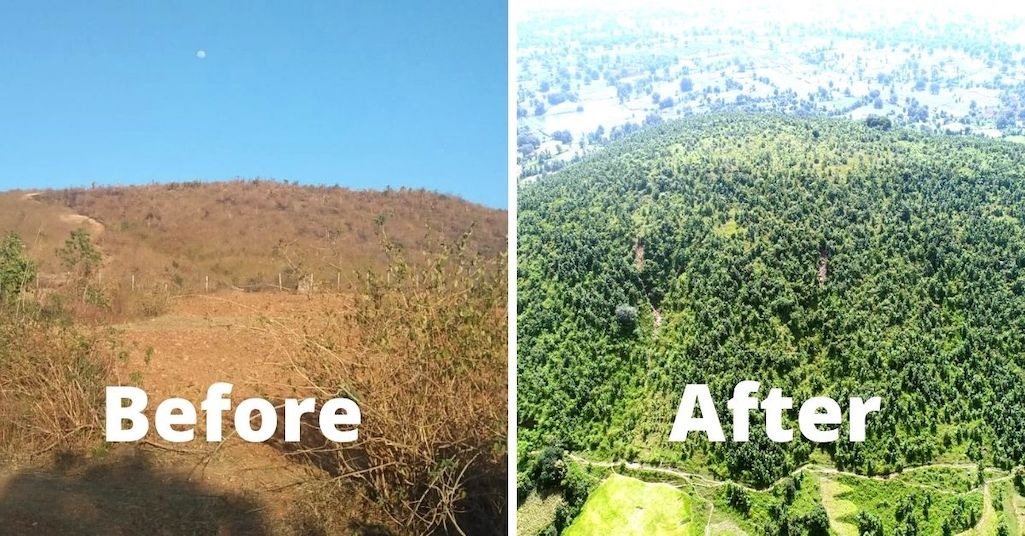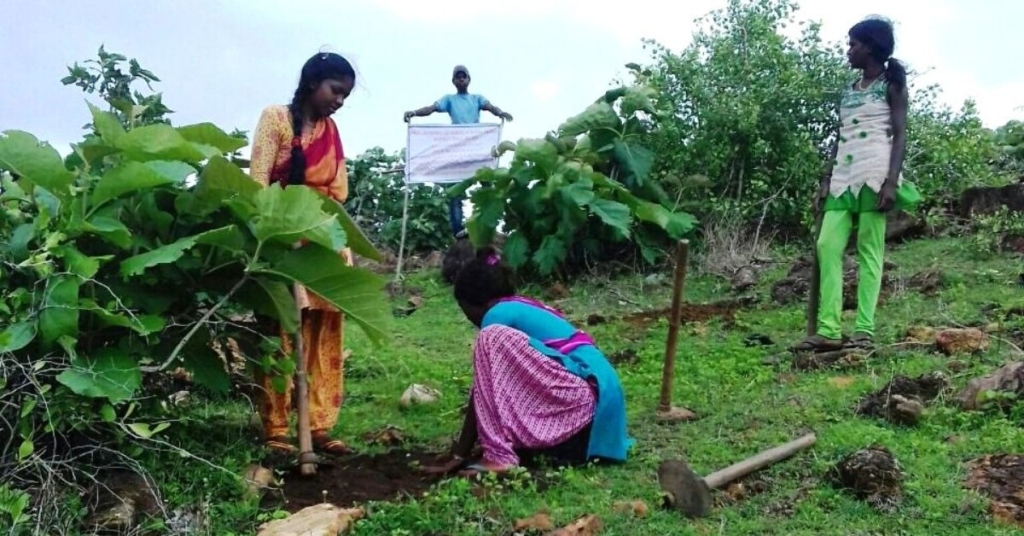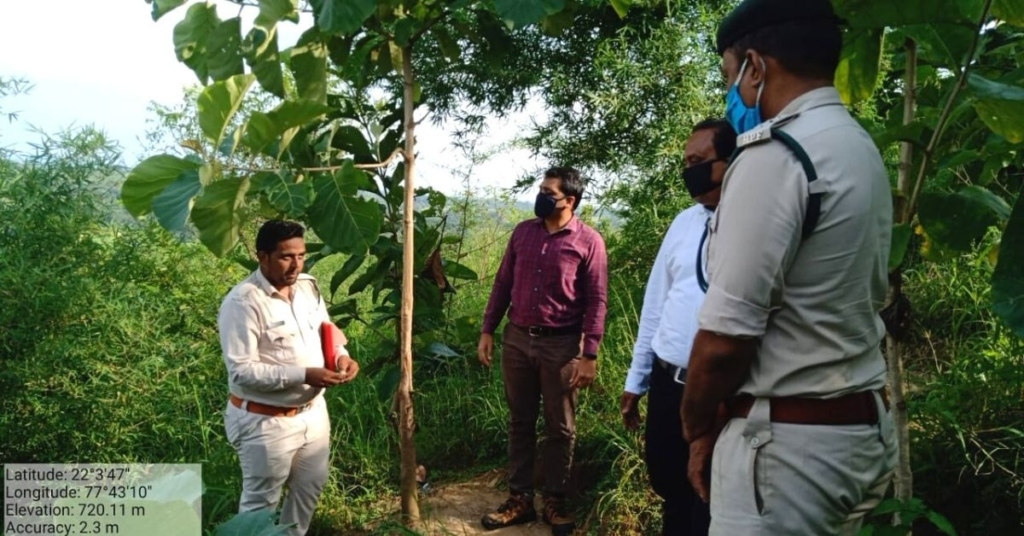Madhya Pradesh IFS Officers Plant 54,000 Saplings in a Day, Turn Barren Hill Green

Quick Jumplinks to Navigate
Bondri hill in the Shahpur division of the forest department is a green haven for birds, hosting plenty of biodiversities. To see the unique spot you will need to take a five-hour drive, covering a distance of 180 kilometres, south from Bhopal, the capital of Madhya Pradesh.
If you had made that drive just three years ago, the picture was quite different (literally). In 2017, the hill was little more than a barren mound. But all of that has changed, thanks to the forest department’s effort to plant 54,000 saplings in a single day!
“We had a target of planting this many trees to meet the plantation targets. It stretched across 49 hectares of the hill,” said Punit Goyal, Divisional Forest Officer (DFO) of North Betul division, in which Bondri hill is located.
Punit said the plantation was done under the Compensatory Afforestation Fund Management and Planning Authority (CAMPA). The activity aims to promote afforestation and regeneration of the environment to compensate for forest land given up for non-forest use.
Hard deadline to Make a Forest

We had to meet the targets, and we could not afford missing them. But not only there were administrative challenges, but the place also had geographic demands,” Punit, who led the effort, said.
For the uphill task, the officer had one deputy forest ranger, two forest guards and 1,000 labourers, all of whom were planting varieties of bamboo and teak.
“Each labourer planted hundreds of saplings sourced from the social forestry department. Also, it had to be made sure the saplings were placed properly, watered, and not damaged or abandoned in the process,” Punit said. (The ‘target’ required each planting to be monitored, to ensure the saplings survived.)
The DFO said the terrain made it very difficult for the plants to survive. “We tried other species before, but the survival rate was too low. Bamboo and teak are resilient in hard rocky terrain. The soil is also not deep enough to facilitate roots to hold better,” Punit added. There are also Sheesham and Karanj trees in fewer numbers.
The divisional forest officer of the forest range said the steep slope also made carrying the equipment, supply, materials and other necessary tools difficult.
Despite these many hurdles, department officers – including range officers Gopal Jatav and Gyan Singh Panwar – stood firm and finished the planned task. Three years later, the department can say the project is a success,” Punit said.
Saplings Bear Fruits

The forest department claims to have achieved a survival rate of 90 per cent for the said plantation. The officer said that the monitoring and maintenance of the trees were carried out by two presiding officers.
The plantation began under Sanjeev Jha who was holding the position then, followed by Rakhi Nanda and then me,” Punit said, who took charge in 2019.
Over the last three years, the drive has brought visible ecological and social impact, the department claimed. “The soil erosion of the hill has reduced dramatically as the roots hold the soil. The other immediate benefit observed is that rainwater is retained and is being harvested in the ground,” Punit said.
In addition to recharging the groundwater resources, the officer said the thousands of trees help in carbon sequestration and mitigating CO2 emissions.
“The green patch also serves as a safe stopover for birds to nest or rest during their migration,” Punit said adding the insects and supporting flora and fauna are also developing as nature takes its course.
Speaking about the sociological impact, Punit said the project provided livelihood under the guidelines of Joint Forest Management Committee (JFMC) in a remote area. “The forest produce like bamboo will be sustainably harvested for commercial use by those who live here. Other means of livelihood are also being explored,” he added.
Gaurav Sharma, DFO, Panna in Madhya Pradesh said that he was surprised to see such a good outcome about the project. “I visited the site three years ago during the training when it was barren. It is indeed a spectacular view to look at the transformation happening after so many efforts,” he added.
Gurudas Nulkar, a trustee at Ecological Society of India, Pune, however, says such ecosystems need more diverse plantations. “Planting saplings of limited species only encourages monoculture, and the insect and food diversity is lost. It is suggested to protect the area and plant diverse species of trees only in degraded areas,” he added
Source: The Better India
